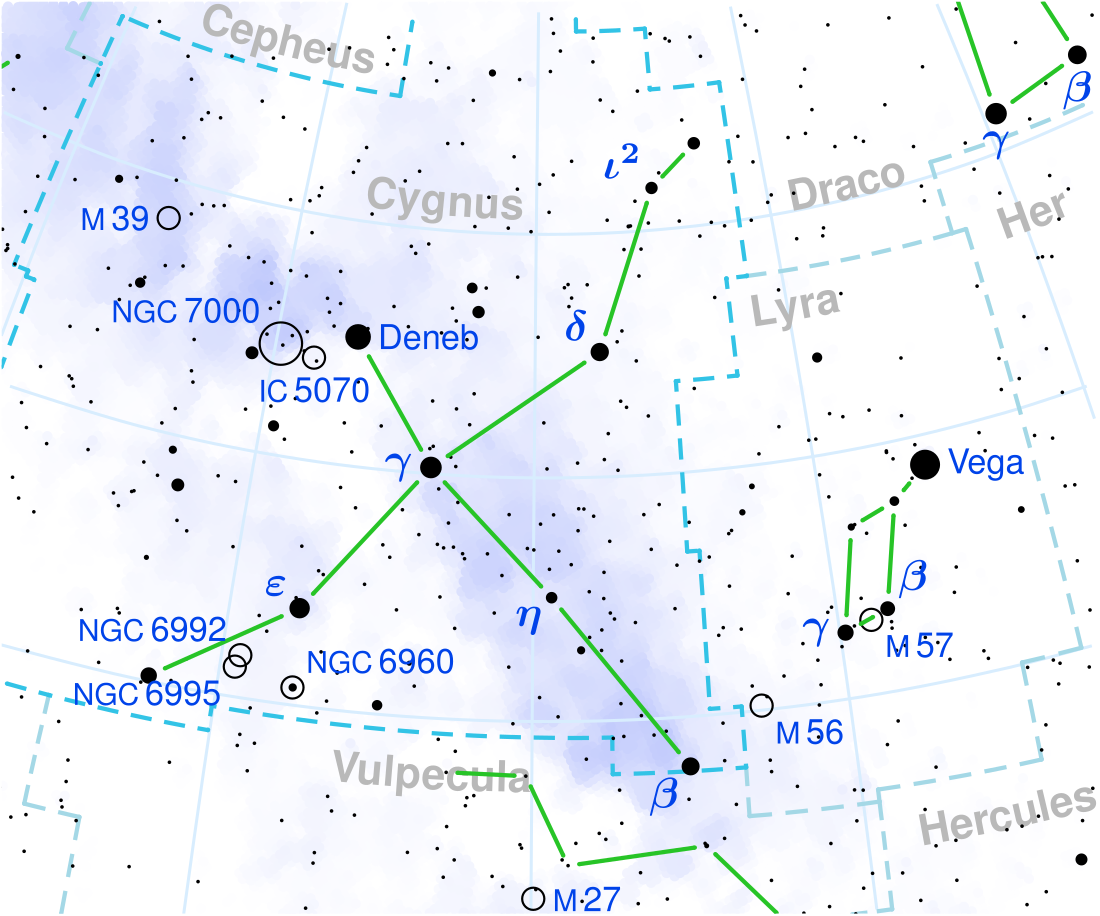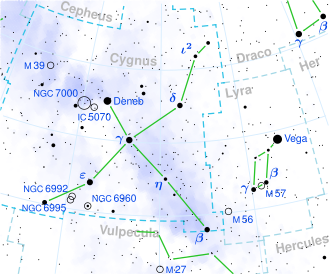Top Qs
Timeline
Chat
Perspective
Pi2 Cygni
Star system in the constellation Cygnus From Wikipedia, the free encyclopedia
Remove ads
Pi2 Cygni, Latinized from π2 Cygni, is a possible triple star[13] system in the northern constellation of Cygnus. It is visible to the naked eye about 2.5° east-northeast of the open cluster M39,[14] having an apparent visual magnitude of 4.24.[2] Based upon an annual parallax shift of 2.95 mas,[1] it is located at a distance of roughly 1,100 light years from the Sun.
Pi2 Cygni has been described as a single-lined[15] spectroscopic binary with an orbital period of 72.0162 days and an eccentricity of 0.34.[7] However, a 2020 paper found no radial velocity variations on the timescale of the published orbit.[16] The primary, component A, is a B-type giant star with a stellar classification of B2.5 III.[3] It is a Beta Cephei variable[4] with an estimated 8.4[8] times the mass of the Sun and around 7.1[9] times the Sun's radius. The star is roughly 33[8] million years old and is spinning with a projected rotational velocity of 50[4] km/s. It is radiating 8,442[10] times the solar luminosity from its outer atmosphere at an effective temperature of around 20,815[11] K.
The third member of this system is a magnitude 5.98 star at an angular separation of 0.10 arc seconds along a position angle of 129°, as of 1996.[17]
Remove ads
Historical names
In Chinese, 螣蛇 (Téng Shé), meaning Flying Serpent, refers to an asterism consisting of π2 Cygni, α Lacertae, 4 Lacertae, π1 Cygni, HD 206267, ε Cephei, β Lacertae, σ Cassiopeiae, ρ Cassiopeiae, τ Cassiopeiae, AR Cassiopeiae, 9 Lacertae, 3 Andromedae, 7 Andromedae, 8 Andromedae, λ Andromedae, κ Andromedae, ψ Andromedae and ι Andromedae. Consequently, the Chinese name for π2 Cygni itself is 螣蛇三 (Téng Shé sān, English: the Third Star of Flying Serpent).[18]
Remove ads
References
Wikiwand - on
Seamless Wikipedia browsing. On steroids.
Remove ads

